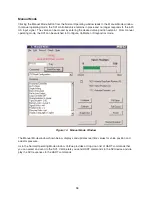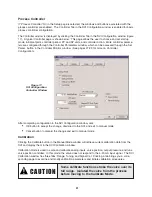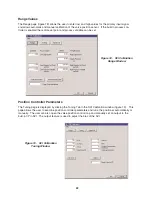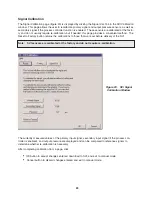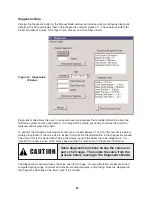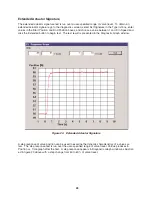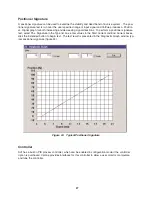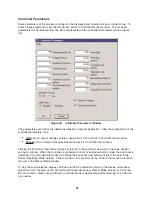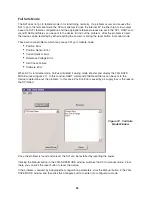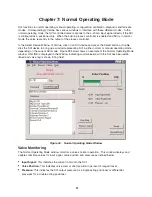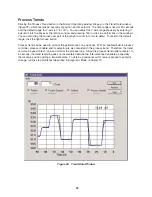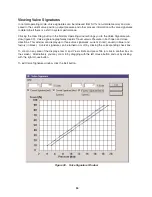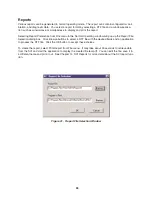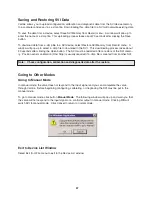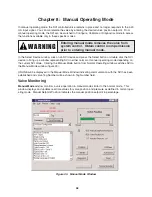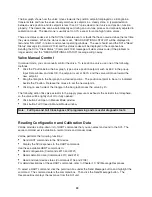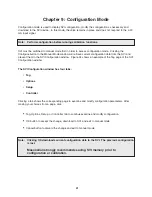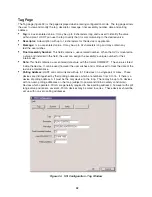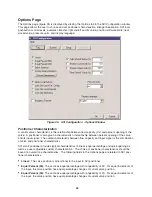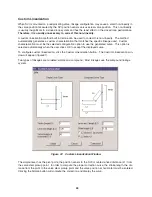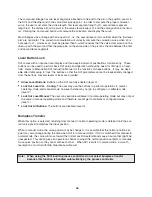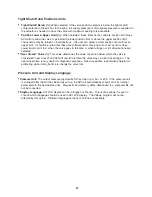
The bar graph shows the valve moving towards the position setpoint (setpoint is displayed as a triangle)
in a transient state and how closely the valve matches its setpoint in a steady state. A typical deviation
between valve position and its setpoint is less than 0.2% plus dead zone if the valve and positioner are
functioning properly. The dead zone can be automatically set during an auto-tune process and manually
adjusted in calibration mode. The dead zone is usually set to 0.0% except for valves using high friction
packing.
The position setpoint is derived from the input signal based on the calibration parameters defined in the
Calibrate mode, the valve characterization and the configuration of air-to-open or air-to-close as defined
in the Configure mode. If linear characteristics and air-to-open are configured, the position setpoint is
equal to input signal expressed in percentage. For example, if the input signal is 12 mA, which is equiv-
alent to 50% of a 4 to 20 mA signal range, then the valve is positioned to the midpoint of travel range.
There are status codes set in SVI that indicate events or faults that have occurred since the last time
they were cleared. When the status codes set, "READ ADDITIONAL STATUS" will be displayed in red
under "ON LINE" in the normal and manual operating windows. The user should send the SVI a "Read
Status" message (Command #136) and the status codes will be displayed in the response box.
Sending the SVI a "Clear Status" (Command #138) message will clear these status codes (if the prob-
lem no longer exists) and the "READ ADDITIONAL STATUS" message will go away.
Reading Configuration and Calibration Data
In the Normal Operating window, ValVue provides a drop-down list of HART commands that you can
select and send to the SVI.
ValVue can perform the following operations:
•
Send HART commands to the SVI device
•
Display the SVI responses to the HART commands
•
Read configuration (Commands #210 and #221)
•
Read calibration data (Commands #213 and #214)
•
Read and clear device status (Commands #136 and #138)
For detail descriptions of these HART commands, refer to Chapter 13, SVI Message Responses.
To select a HART command, click the pull-down box under the Send Message button and highlight the
command. The command enters the command box. Then click the Send Message button. The
Response Box displays the response from the SVI unit. Figure 28 displays the result of sending Read
Identifier command to a SVI.
HART is a master slave protocol. An SVI (the slave device) can not send information unless requested
by the master device. You must click the send button to send the message and get a response.
32
Note:
Reading additional status helps diagnosing valve and positioner problems.

